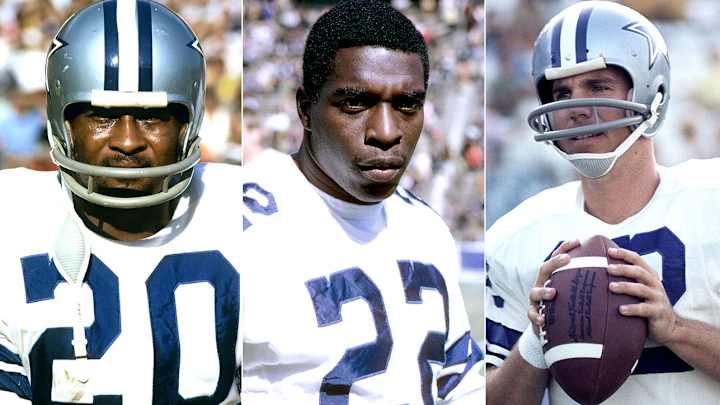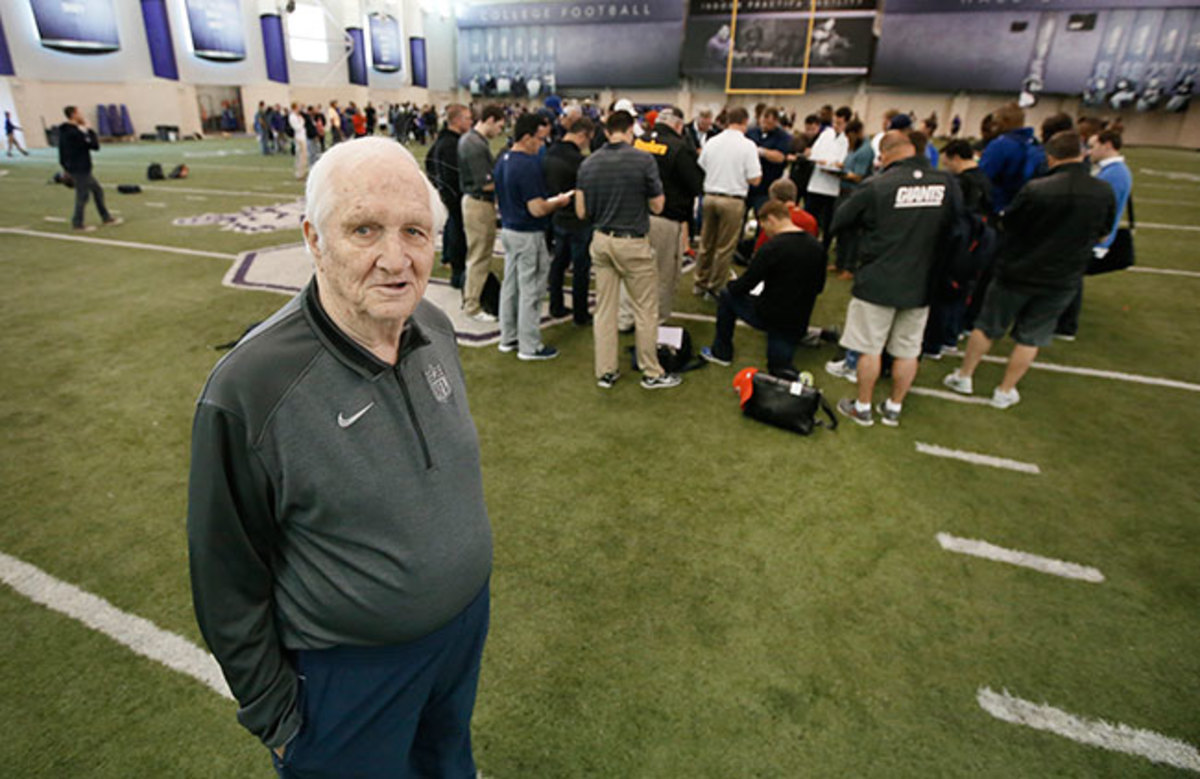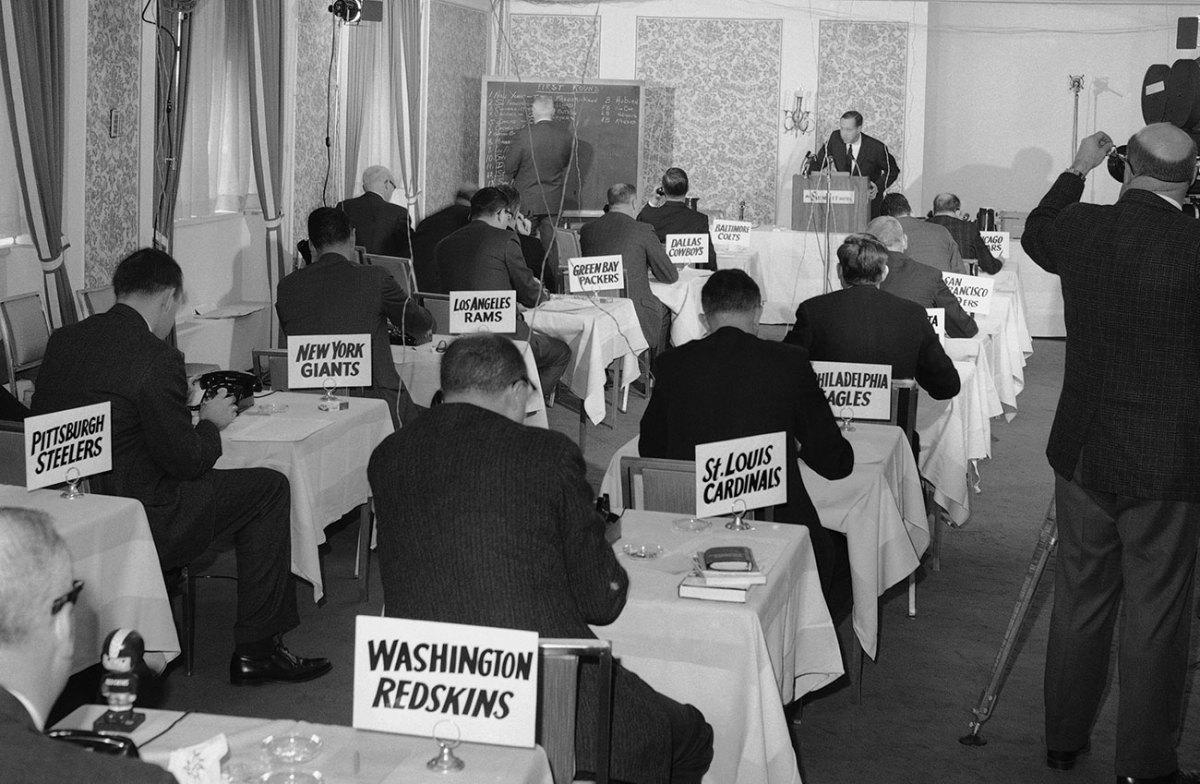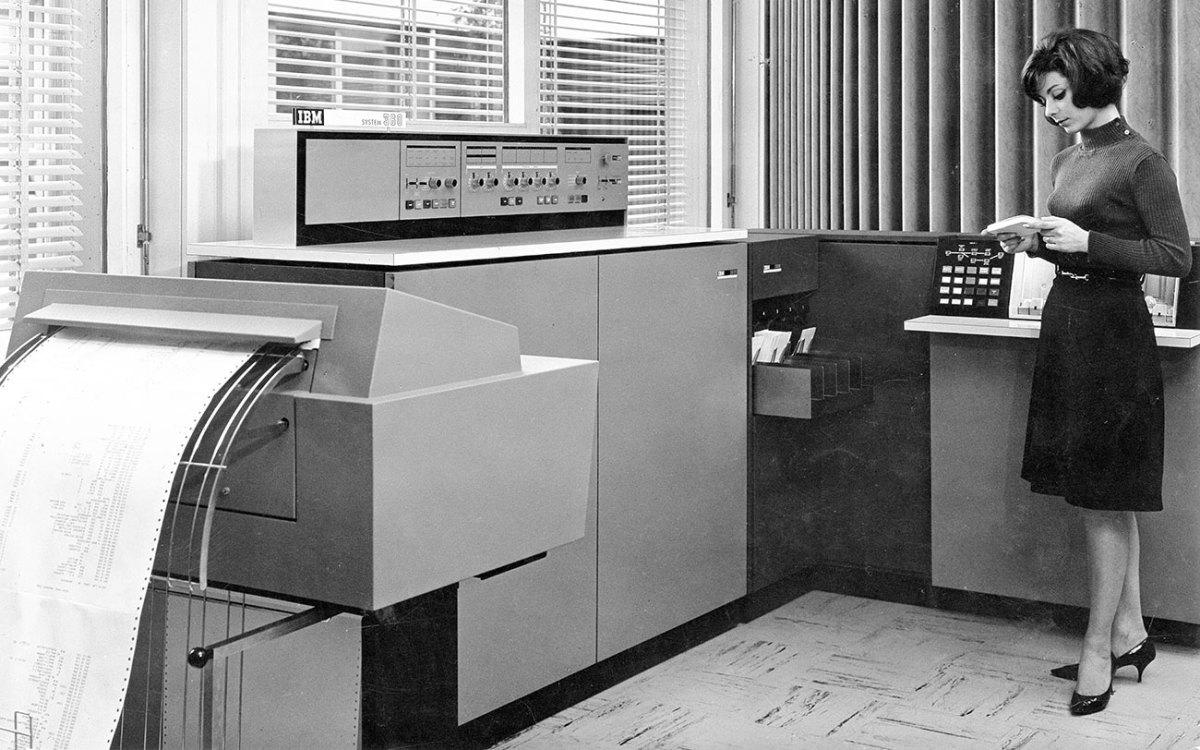Gil Brandt: The Draft Guru Who’s Seen It All

Gil Brandt’s first NFL draft was 1955, back when he was a part-time scout for the Los Angeles Rams. Fast-forward six decades, and much has changed both in the draft and in scouting—and Brandt has been there every step of the way. In 1960, when the Dallas Cowboys were born, he became the team’s first vice president of player personnel and helped create a new scouting and evaluation system that is still used across the NFL today. He’s currently a senior analyst for NFL.com and, each spring, oversees which players the NFL invites to its green room on draft night. There might not be anyone with a better perspective on the evolution of the draft than Brandt, who spared some time to talk with The MMQB during his busiest calendar month.

VRENTAS: On Thursday, the NFL draft will begin on a stage in Chicago, in front of thousands of fans, broadcast in primetime. What was the scene like 60 years ago?
BRANDT: The first time the Cowboys were involved in it, in 1960, the draft was the day after the Philadelphia-Green Bay championship game in Philadelphia. We drafted out of a hotel, and I don’t think there were five media people there. This year there are 1,700 requests for media access. People would come in with rolls of quarters. Why rolls of quarters? Because we didn’t have credit-card calling in those days. A guy would go over and call Pappy Lewis [the head coach] at West Virginia, and an operator would say, “That’s $3.75.” He’d drop in that many quarters: clang, clang, clang, clang. “Hey Pappy, we’ve gotta draft a tackle. Who’s the best guy you played against?” Or, “Who is the best guy on your team?” People came in with a Street & Smith football magazine to find names to draft. The Billings (Mont.) Gazette published an All-Midlands Team, as they called it in those days, and people would go and look and see who made the All-Midlands team. The Rams and the 49ers were the only teams that really had any scouting. In those days everybody started practices on Sept. 1, and on Sept. 1 a guy named Eddie Kotal [Rams], and Pappy Waldorf [49ers], who had been the head coach at California and Northwestern, would get in their cars and start driving from one school to the other, so at least they would know who they were drafting.
“We drafted right through the night. We picked Bob Hayes in the seventh round, then a couple rounds later we took Roger Staubach. By then all the coaches had already left because everybody’s team was playing that Sunday.”
The 1964 draft was in Chicago at the Sheraton hotel. We were drafting during the [1963] season, and there was no time limit. As an example, we the Dallas Cowboys held the draft up for about six hours in the second round because we were trying to find out about Mel Renfro, who we eventually took as our second pick. He had put his hand through a glass when he heard about the Kennedy assassination, and we weren’t sure just how serious the wrist injury was. So we sent a doctor down from Portland, Ore., to Eugene. The interesting part of it is that Vince Lombardi was there, and everybody was kidding us about these computers that we were using. Vince strolled over to our table after about three hours, and he said, “What happened? Did your computer break down?” “No, it’s fine—it’s just kind of resting right now.” We drafted right through the night. We picked Bob Hayes; that was in the seventh round. Then the Lions drafted Bill Parcells. I think it’s one of the only times in history past the first round that two Hall of Famers have been drafted back to back. [Ed. note: HOFers Renfro and Paul Krause went back-to-back in the second round that same year; Dave Casper and Jack Lambert were chosen back-to-back in ’74.] And then a couple rounds later we took Roger Staubach. But by the time this was taking place, all the coaches had already left because everybody’s team was playing that Sunday, and they had to get ready for that.

VRENTAS: How did we get from there to where we are today, where the draft dominates the football world from February straight through April?
BRANDT: What is happening is this: People now realize if you are successful in the draft, that you have a good chance to have a winning football team. So consequently, everybody is putting a lot of resources into draft preparation. We have the combine now, which we didn’t have before. There were over 300 pro days this year, places like Shepherd University and South Dakota State and Montana State. The University of Montana, which is kind of a remote place, had like 20 different teams that were there in person to watch a pass rusher by the name of [Tyrone] Holmes, who is a pretty impressive guy. Everybody is bringing guys in for visits. The defensive back for Middle Tennessee State [Kevin Byard] ran really well. He hadn’t been to the combine, but now he’s had 15 team visits and six people have come into work him out. It is really an accelerated thing.

VRENTAS: You changed scouting by helping create a computer-based system that teams still use today. How did you do it?
BRANDT: Before we started using the computer, people would say, he has average strength; he has outstanding strength; he has good strength. It was just a written description, and there was no standard. My “average” might have been your “very good”; your “very good” might have been my “average.” In 1961 we went to IBM and said, we want to introduce a scouting system, and we want your help. They sent us to a satellite company called Service Bureau Corporation and introduced us to a man named Salam Qureishi. He was from India, and he didn’t know if a football was pumped or stuffed. But he did know how to program a computer. We had to have something in there to program, so we had to find out, what were the characteristics of a football player? There were five characteristics that were common to every position: 1) character, 2) mental alertness, 3) quickness, agility and balance, 4) strength and explosion and 5) competitiveness and aggressiveness. Then we had to find out position specifics, which are obviously a lot different for a wide receiver than they are for an offensive lineman, and we weighted those characteristics. So say you are a defensive lineman and you get a 5 in strength and explosion and a 5 in quickness, that’s 10; and I’m a quarterback, and I get an 8 in mental alertness and a 1 in strength and explosion, that’s only 9 points. But because of the weighting of the most dominant characteristics for success at the position, which would be mental alertness for a quarterback, I would be a better player than you.

We started from nothing, from scratch. You have to remember, this was 50-plus years ago. As an example, the IBM 360 computer that we used was about six feet long and three feet high, and it didn’t have the capacity that a laptop has now. Inputting the information was so much different. In those days it was like you were filling out an exam. It was a scanner, and you had to put a 6, or 7, or 9, or whatever the grade was. The machine didn’t recognize “Gil Brandt,” it recognized, “Player No. 340.” We had to have player numbers, school numbers, position numbers. This was a process that took six or seven years. That’s basically the way the system operates now. The head coach or the person making the decision says, I want to know who all the wide receivers are who are 6-foot or taller, who are 195 pounds or bigger, who ran a 4.6 of faster, and who have a quickness and control factor of 7.
• IN THE FILM ROOM WITH CARSON WENTZ: Andy Benoit breaks down tape with the NDSU quarterback
VRENTAS: How many teams use some version of your scouting system?
BRANDT: I think probably everybody does, and they are too proud to admit it. Until you develop a better system, just like, until they build a better car, you stick to the old one that’s been pretty successful. I think Coach Belichick will tell you, they don’t do it exactly like we did it, but they do it a lot like we did it. And I would say they’re pretty good.
VRENTAS: You wrote on Twitter recently that in 29 years with the Cowboys, you never drafted a player for whom you didn’t have confirmed times. A couple top-tier prospects, including Laremy Tunsil and Myles Jack, haven’t run the 40-yard dash for teams this spring because of injuries. Explain your policy.
BRANDT: The reason we didn’t want to do it is we had minimums that we used. As an example, if a Tunsil couldn’t run a 5.25, we weren’t going to draft him. We were going to stay away from him. We tried to build not a team of exceptions, but a team that was built to our specifications as far as height, weight, speed. Mike Singletary, to this day, always gets on me. He says, you didn’t draft me because I was 3/8 of an inch below your expectation. He was right. We didn’t want any 5-11 linebackers, and there are some very good ones. But we tried to have minimums for every position. And the minimums included speed.
What you try to do is this: You try to find every possible way to make the coin flip come down heads or tails, whichever you called. You are seeing that guys that run a 4.61 have a much better chance than a guy that runs 4.65. You are trying to be like McDonald’s. I don’t think you’ve ever seen a boarded up McDonald’s. It’s because they are very meticulous in how they choose locations. And ours was the same way. We were very meticulous in the way we chose players. We didn’t want to get somebody that the college coach says, “Oh he is fast; he can run a 4.8,” and when he comes in, he runs a 5.1.
• PETER KING’S MOCK DRAFT: Forecasting another top-10 trade
VRENTAS: You also shared that Myles Jack’s mom called you, seeking information on how teams were interpreting her son’s medical reports. How did that conversation go?
BRANDT: She is a very bright lady, and she said, “Look, I’m putting my mama hat on now. I read and see people saying, he’s not going to be drafted because he is injured, and so on.” I told her, I can tell you he will be drafted. The only thing is, he probably won’t be drafted in the top five like we all expected him to be. But he will still be drafted, and you will have a grand time in Chicago at the draft.
VRENTAS: How often do you hear from prospects’ families wanting to know what teams are saying about them?
BRANDT: Quite a lot. I am involved in selecting the players who come to Chicago for the draft. The first thing I do is I call the player and I say, “We’d love to have you at the draft, and here’s what we’d do for you.” Now with most 21 or 22-year-old guys, the next thing you have to do is call the mother, because you can never be sure they’re writing down all the details. The mothers are flattered to have you call. As an example, I had one mother call me, and she said, “Mr. Brandt, I just wanted to let you know, I am so happy about coming to Chicago that I went out and bought a new dress. This country girl is going to have a new dress when she comes to Chicago.” That’s great. Two or three weeks later on a Saturday night, she calls and says, “You know I told you I was bringing three of my lady friends with me, but now that son of mine is hogging all the tickets. Can you help me out?”
• TEAM-BY-TEAM NEEDS, BEST FITS:AFC | NFC
So I have formed a relationship with a lot of mothers. If I need a mother to call a family that’s thinking about not coming to the draft, or is concerned, I can go to Jackie Newton, Cam Newton’s mom. She called a mom for me this year. Because this is a huge thing—all of a sudden you’re coming to Chicago or New York or wherever the draft is, and they’ve heard all the horror stories about guys having to sit in the green room. Yeah, I wish I could pick the right 25 guys every year, but it doesn’t always work that way. Every once in a while we get a couple guys that are carried over to the second round. But I always tell them, if four years ago, when your son entered school, I told you he was going to be drafted, you’d be ecstatic, wouldn’t you? Yeah. Well now, think abut it this way: Not only is he going to be drafted, he’s going to be drafted in the first or second round. Doesn’t that make you feel good? They usually say, I never thought about it that way. We haven’t had one person out of the hundreds who have come to the draft and not said, I had one of the greatest days of my life. The excitement of walking the red carpet; and we give them an 11-by-16 family picture; and this year, when they come in on Tuesday, we’ll have a big dinner for them. It is a well-planned event, and everyone in sports is jealous of how well we do it.
• IN THE FILM ROOM WITH JARED GOFF: Andy Benoit breaks down tape with the presumptive No. 1 pick
VRENTAS: This year there have already been two blockbuster trades, for the Rams to move up to No. 1 and the Eagles to move up to No. 2, presumably to draft quarterbacks Jared Goff and Carson Wentz. What do these moves say?
BRANDT: Everybody realizes that if you don’t have a quarterback, you have no chance at all. And what happened last year in Tampa Bay, and to a lesser extent in Tennessee, was Jameis Winston gave them a lot of hope, and Marcus Mariota gave them a lot of hope. I think everybody realizes, if you can get the right guy—and I think these two guys are the right guys—then you have a chance to be good for a number of years. You saw what happened in Oakland, they got the right guy [Derek Carr] in the second round. And if Cleveland would have gotten the right guy and taken the Raiders’ quarterback instead of Johnny Manziel, the Cleveland franchise might be different right now.
VRENTAS: You think both Goff and Wentz can be franchise guys?
BRANDT: I’m not sure what “franchise” means. I think both of them have the ability to take a team to the playoffs.
VRENTAS: The NFL draft is so different today, but what hasn’t changed?
BRANDT: The same characteristics I talked about in scouting players, those five characteristics, are still en vogue today. Maybe the weights of them change, maybe we put less of an emphasis on strength and explosion for a quarterback and more on mental alertness, because the game has become so intellectual. But I think the five characteristics we started with in 1961 are still the same characteristics. And I think most of the position specifics are the same, though in-line blocking was probably more important in the past than it is now, and pass protection back then was probably less important. So you change the weighting system, and the way you change it is you look to see what leads to success and what leads to failure. It’s like zip-code mailing. You find out that 75203 is a bad zip code and 75225 is a good zip code. Those people don’t bother zip-code mailing to 03, but they concentrate on 25. What people have done to improve how they do things in other industries, we were doing to improve how people do things in football.
Question or comment? Email us at talkback@themmqb.com.
